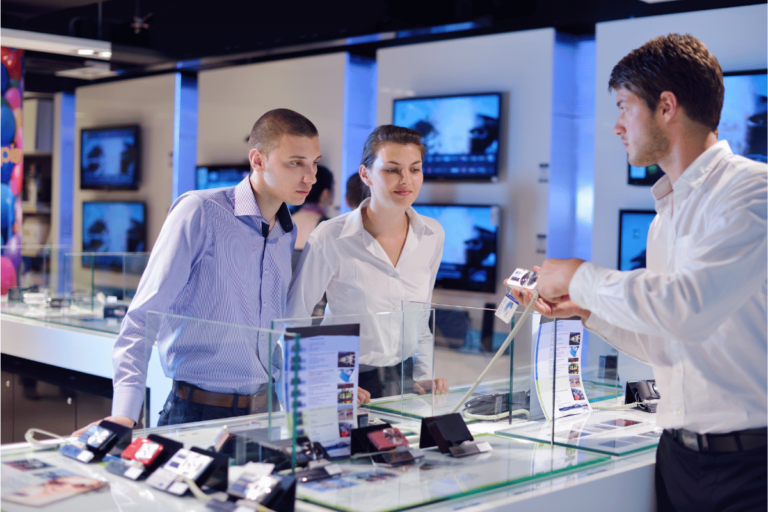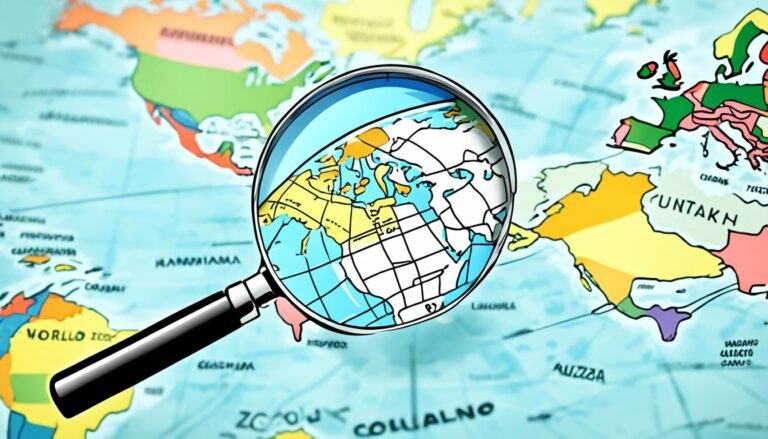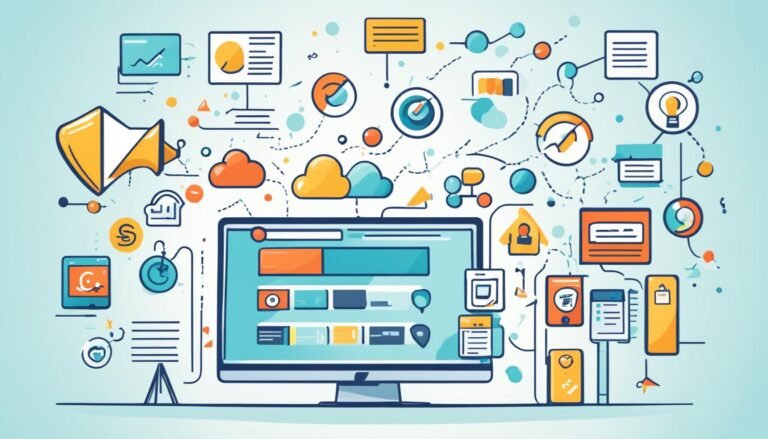Instant Gratification: The Rise of Quick Commerce and Its Impact on Consumer Expectations
Have you ever felt like waiting a few hours for an online order was too long?
The digital world has changed how we shop, thanks to quick commerce. This new way of shopping is all about getting things fast. It’s made people expect quick service when they shop online.
Quick commerce is all about speed. It aims to deliver orders fast, often in just a few hours. In fact, 96% of customers think fast delivery means getting their items the same day.
Technology like artificial intelligence and machine learning helps make quick commerce better. These tools make shopping faster and more personal. As shoppers want things right away, companies must keep up to stay ahead.
Quick commerce affects many areas, from buying groceries to fashion and healthcare. Even traditional online stores are changing to be faster, just like quick commerce.
Key Takeaways
- Digital transformation fuels the rise of quick commerce, aiming to meet consumer demands in the on-demand economy.
- Fast delivery is essential, with 96% of customers viewing it as synonymous with same-day service.
- Technology, including AI and ML, is critical for enhancing efficiency and personalization in quick commerce.
- Traditional e-commerce platforms are evolving to compete with quick commerce innovations.
- Quick commerce impacts various industries, from fashion to healthcare, reshaping consumer shopping experiences.
Understanding QuickCommerce: A Paradigm Shift in Retail
The retail world is changing fast, and Quick Commerce is a big part of that change. It’s all about speed and making things easy for shoppers. Quick Commerce means getting your items fast, often in minutes, unlike the hours or days of old. This new way of shopping meets what people want now and changes how we think about online shopping.
Defining Quick Commerce
Quick commerce, or Q-Commerce, is changing online shopping by promising super fast delivery. It’s faster than the usual hours or days, giving shoppers their items in minutes. This is done with smaller vehicles that move quickly through traffic.
This fast delivery is a big hit with young shoppers who want things quickly. Q-commerce is becoming popular in many areas, like buying groceries online, which is seeing a big increase in demand.
The Evolution of Quick Commerce
Quick Commerce started in the early 2000s with the rise of online shopping. Over time, better logistics and what shoppers expect have pushed it forward. In May 2020, online sales hit $82.5 billion, a 77% jump from the year before.
This shows how important efficiency and ease are in shopping today. A PwC study found 80% of Americans think these things make shopping better. The growth of Q-commerce shows how retail is moving towards being more flexible and focused on the customer.
New companies are popping up to meet the need for fast service. Retailers need to focus on quick and easy shopping to keep up with these changes. This way, they can reach more customers and meet their expectations.
Accelerating Transactions in QuickCommerce: The Need for Speed
In the fast-paced world of QuickCommerce, speed is key. Today’s shoppers want fast and easy transactions. Businesses must keep up to meet these needs. Making online shopping quick and easy is vital for success.
QuickCommerce uses several strategies to speed up transactions:
- Single-click checkouts let shoppers buy quickly.
- Fast payment systems process transactions safely and quickly.
- Responsive websites make shopping smooth, cutting down on delays at checkout.
AI and Machine Learning are big helpers in Streamlining Online Transactions. They make delivery routes more efficient and tailor the shopping experience to each user, boosting QuickCommerce Efficiency.
QuickCommerce companies use GPS tracking and real-time updates to keep shoppers informed. This keeps customers happy and engaged. With the market expected to grow to USD 467.9 Billion by 2032, staying innovative is crucial.
Speed in QuickCommerce is not just about pleasing shoppers. It’s about setting new standards. Amazon Prime Now, DoorDash, and GoPuff lead the way with their fast delivery services. They’re changing how people shop.
The push for speed in QuickCommerce will keep growing. Companies must adopt new tech and strategies to stay ahead. By focusing on QuickCommerce Efficiency, they can meet and beat what shoppers expect. This sets the stage for future success.
“QuickCommerce is transforming online shopping into an instant, gratifying experience, raising the bar for the entire retail industry.”
Creating a Seamless User Experience: QuickCommerce App Optimization
The success of QuickCommerce depends on fast delivery and a smooth user experience. An optimized QuickCommerce app is key to this. The US Quick Commerce market is set to hit US$56.52 billion by 2024, growing at 7.70% annually. This will lead to a market size of US$81.91 billion by 2029.
Companies are putting a lot into making their QuickCommerce apps better. They focus on intuitive navigation and responsive design. This makes buying things faster and boosts customer happiness and loyalty.
A top-notch QuickCommerce app makes shopping better by offering fast, trackable deliveries. It’s expected that more people will use it, from 16.4% in 2024 to 20.4% by 2029. The app works well on all devices, making shopping easy and fun.
According to Deloitte, 50% of customers pay more for convenience. This shows how crucial a smooth user experience is. The use of 5G and 4G for payments will help QuickCommerce grow. It will give users a better experience and help improve the app.
Fast Delivery as a Cornerstone of Quick Commerce Success
Fast delivery is key to QuickCommerce’s success. It meets consumer needs for quick purchases. This is thanks to advanced logistics, cutting-edge tech, and strategic partnerships.
Logistics That Drive Speed
Quick Delivery Logistics are crucial for fast delivery. Companies like Amazon and Walmart invest in strong logistics. They use real-time tracking and smart route planning.
This makes delivery faster and customers happier. Services like Instacart and Shipt offer same-day delivery. This shows how good logistics can change how customers feel.
Technologies Enabling Rapid Delivery
Advanced Delivery Technologies speed up delivery. Innovations like drones and real-time tracking change last-mile delivery. They make it quicker and more reliable.
These tech advancements also give valuable data. This helps businesses improve and understand what customers want. The growth of QuickCommerce is expected to be 47% a year through 2026, thanks to these technologies.
Strategic Partnerships for Fulfillment
Strategic Fulfillment Partnerships keep QuickCommerce’s fast delivery promises. Working with trusted logistics providers helps retailers grow efficiently. These partnerships are crucial for small retailers without the resources for fast delivery.
They also reduce costs. This makes fast delivery possible without high expenses.
The Role of Technology in Quick Commerce Advancements
QuickCommerce Technology has changed the way we shop. It uses AI and Data Analytics to make shopping better for everyone. Now, stores can predict what customers want and suggest products they might like.
Customer Support Automation makes shopping smoother. AI helps solve customer problems quickly, making people happier. This means shoppers get help fast, without any hassle.
In 2024, same-day delivery in the US was worth $9.25 billion. By 2030, it’s expected to hit $13.15 billion. This shows how much people want fast delivery. QuickCommerce uses smart routes to speed up deliveries and save money.
Autonomous vehicles and drones are also making deliveries faster. This meets the demand for quick service. Data Analytics helps stores know what customers want, making sure they have what they need fast.
About 23% of people in some countries are willing to pay more for same-day delivery. This shows how much people value fast and personalized service. Stores use data to manage their stock better, so products are always ready for quick delivery. They’re also using electric vehicles and eco-friendly packaging to be kinder to the planet.
Hyperlocal delivery and dark stores help with quick deliveries in busy cities. Voice-activated ordering is another new feature. It lets customers order without using their hands, making shopping easier and faster.
Consumer Expectations and the Psychology of Instant Gratification
In today’s digital world, what people want has changed a lot. This change is thanks to the desire for instant rewards. Companies use this to make shopping fast and rewarding.
Why Instant Gratification Matters
Now, making customers happy right away is key. Instant rewards help people decide faster and make them happier. This makes shopping feel more personal and quick.
Studies show that quick rewards in apps or online can really get people involved. Offering discounts or upgrades right away can make people buy more. Quick checkout options and easy redemptions also help keep customers happy.
The Psychology Behind Quick Commerce
Quick commerce works because it understands what people think. People often pick smaller rewards now over bigger ones later. This makes them come back for more.
Companies like Amazon and Walmart know how to make shopping fast and easy. They make sure there are no delays or problems. Using chatbots and AI makes shopping even better.
But, it’s important to balance quick rewards with long-term goals. If companies promise too much too soon and don’t deliver, people get upset. Good brands give quick rewards but also focus on quality and reliability.
The Rise of Quick Commerce and Its Impact on Consumer Expectations
QuickCommerce has changed how we shop online, making things faster and easier. A study by PwC found that 80% of Americans now want shopping to be quick and easy. This shows how QuickCommerce has changed the way we shop.
The COVID-19 pandemic made things even faster, with 21% of US shoppers buying groceries online. Even people over 65 started using new tech and habits. This big demand isn’t just for groceries. Services like Glovo in Spain deliver furniture, medicine, and tech in an hour.
Online grocery sales jumped by 37% in 2022. The market for last-mile delivery was worth $25 billion in 2021 and could hit $72 billion by 2025. Experts say 50% of shoppers were willing to pay more for fast delivery and in-store pickup.
Investors are watching this fast-changing market closely. But, there are hurdles like traffic in cities. Companies like Getir, Gorillas, and Zapp have had to adjust. Still, QuickCommerce is growing fast. In India, quick commerce made US$ 2.3 billion in 2023, up over 70% from last year. Experts predict the Indian market will grow by 27.9% a year until 2027, reaching US$ 5.5 billion by 2025.
Retailers are now changing how they deliver to meet new consumer demands. They’re looking at new ways to make shopping faster. Quick commerce has changed what shoppers expect from online shopping forever.
Adapting to Quick Commerce Realities: Traditional E-commerce’s Response
The shift from selling a Sting CD in 1994 to today’s huge e-commerce market has forced quick changes. Traditional e-commerce sites are now using new strategies to keep up with QuickCommerce Challenges. Companies like Amazon and Walmart are using micro-fulfillment centers and fast delivery to meet the need for speed.
These platforms are also making strategic partnerships to improve their delivery. For example, Shopify is working with logistics experts to make delivery faster. This change is key to keeping customers happy and competitive with new QuickCommerce providers.
Using advanced tech like AI chatbots for customer help and data analytics for personalized shopping is crucial. With a focus on these new solutions, e-commerce sites are making shopping better for users.
Mobile commerce and social media, with shoppable posts on Instagram and Facebook, have changed how people shop. These changes show how fast the e-commerce world is changing. The aim is to meet current needs and be ready for the future.
Quick Commerce and the Future of Online Shopping
The future of online shopping is closely linked with Quick Commerce (Q-commerce). Rapid tech advances and shifting consumer tastes are changing digital retail. Q-commerce is a key player in this change. It’s now worth about $300 million and could hit $5 billion in five years, showing its strong growth.
Emerging Trends in Quick Commerce
Q-commerce is bringing in new delivery methods like drones and self-driving cars. These will make getting goods to people faster, often in under 30 minutes. Micro-fulfillment centers focus on quick-selling items like food and personal care.
AI and machine learning are also making deliveries faster and more efficient. These changes are key to meeting shoppers’ high expectations for quick delivery.
The Future Outlook
The Q-commerce market is expected to grow a lot, especially in the MENA region. It could make about USD 337.90 million by 2024 and USD 47 billion by 2030. This growth comes from more people living in cities, more internet and smartphone use, and changing what people want to buy.
Sustainable practices, like using eco-friendly packaging, are becoming more common. This shows the industry’s focus on being green. Q-commerce is changing how people shop because of the pandemic. Companies like GoPuff, Blinkit, and Instacart are leading the way, making sure Q-commerce stays important in the future of online shopping.
Source Links
- The Rise of QuickCommerce: How Instant Gratification is Reshaping Online Shopping
- Quick Commerce: Meet the New Wave Transforming Retail and e-Commerce
- Quick Commerce and eCommerce: How are they Different? – Blink
- Next Generation Retail: How to Use New Technology to Innovate for the Future 9781398609648, 9781398609631, 9781398609624, 1398609641 – DOKUMEN.PUB
- What is Quick Commerce: Benefits for Consumers & Businesses
- Navigating the Explosive Growth: Quick Commerce Market Trends and Future Projections
- How Quick Commerce is Transforming FMCG and eCommerce Sectors?
- Detailed Guide to Develop Quick Commerce App | Richestsoft
- Shipsy – The World’s Leading Logistics Software Provider
- Quick Commerce Market Analysis Report Share, Size, 2032
- The Rise of Quick Commerce: A New Era for Retail
- Quick Commerce – An Overview of the Benefits of Fast Delivery in E-commerce – Copymate
- Quick Commerce: Upcoming Trend of Ecommerce Industry
- The Rise of Quick Commerce: Transforming the Retail Landscape
- The Need For Speed: How Quick Commerce Is Revolutionizing Delivery Services | Codilar Technologies
- Instant Gratification Incentives Explained
- The Psychology Behind Instant Gratification in Customer Engagement – Zatap
- Complete Guide to Instant Gratification Marketing (Examples Included) — 3 tier logic
- What is Quick Commerce and What does it mean?
- The Rise of Quick Commerce in India: Transforming Retail & Delivery | IBEF
- What is Quick Commerce?
- Adapting to Changing Consumer Preferences in the Age of E-commerce
- The Fast Future of eCommerce & Benefits of Quick Commerce
- Becoming indispensable: Moving past e-commerce to NeXT commerce
- Robusta Technology Group | The Shift Towards Quick Commerce: A New Era in E-commerce
- Understanding QCommerce And The Future of Instant Shopping
- How Quick Commerce is Revolutionizing E-commerce Development







